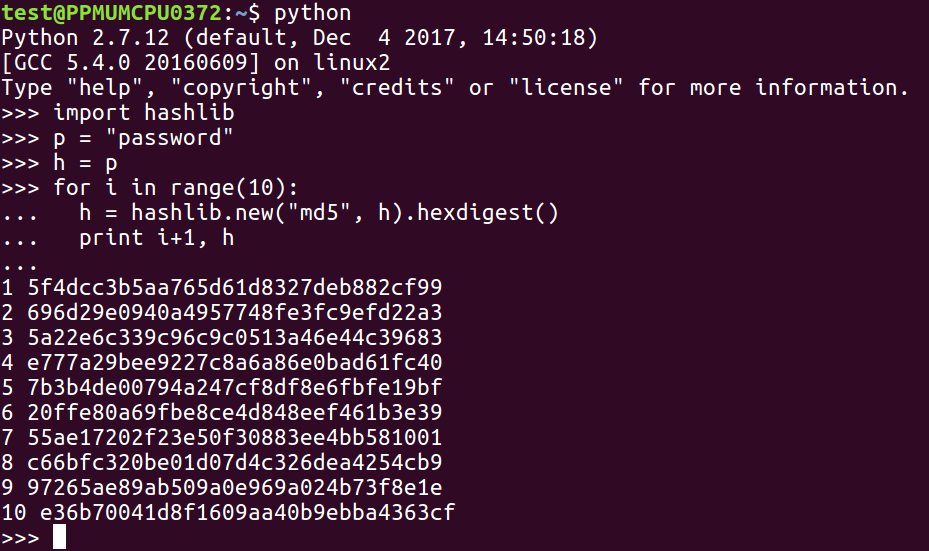After a review of how MD5 and SHA work in Python, we will see what a many round hash is, and then you will get two challenges to solve.
MD5 and SHA are both easy to calculate:

From the hashlib library, you just need to use the hashlib.new method and put the name of the algorithm in the first parameter, the password in the second parameter, and then add the hex-digest to it to see the actual result in hexadecimal instead of just an address to the object. To do many rounds, you just repeat that process.
You need to put the password in h and then use the current h, to calculate the next h and repeat this over and over and over. Here's a little script that prints out the first 10 rounds of a multi-round MD5 hash:

This technique is called stretching, and it's used by stronger password hashing routines, such as the Linux password hashes that we've seen in previous sections.
Here's your first challenge: a 3-digit password hashed 100 times with MD5. Find it from this hash:
Here's another challenge for you. In this one, you have an unknown number of rounds with SHA-1, but it's not more than 5,000. So, you just have to try all values and find the 3-digit password of the results in this hash.
